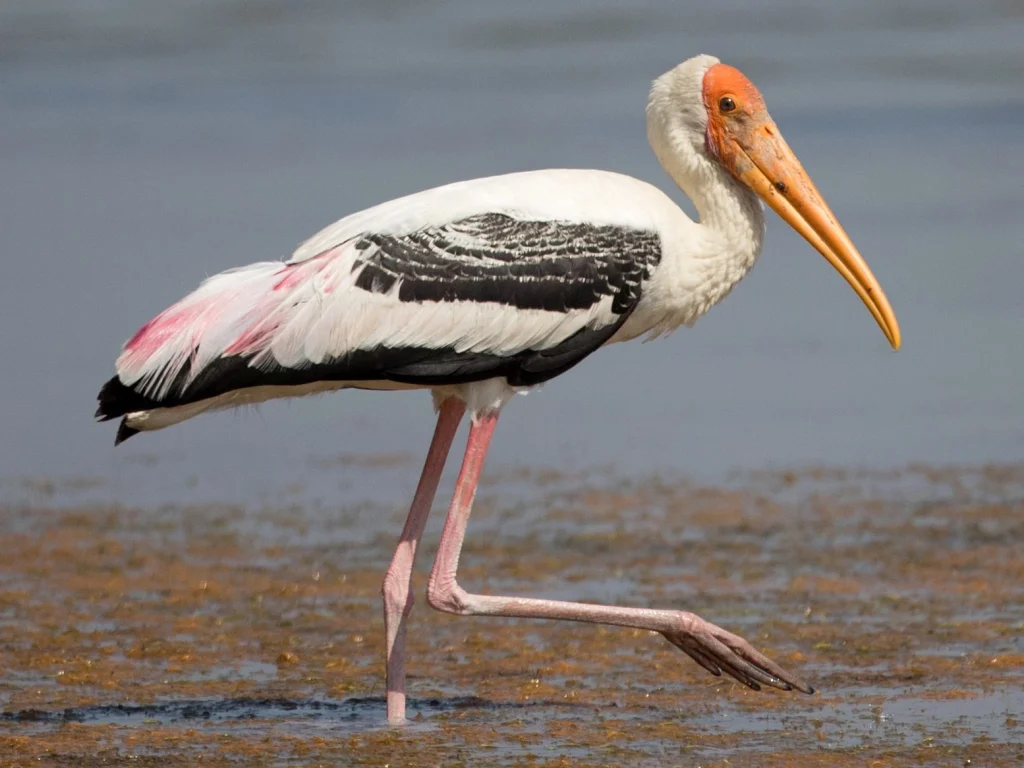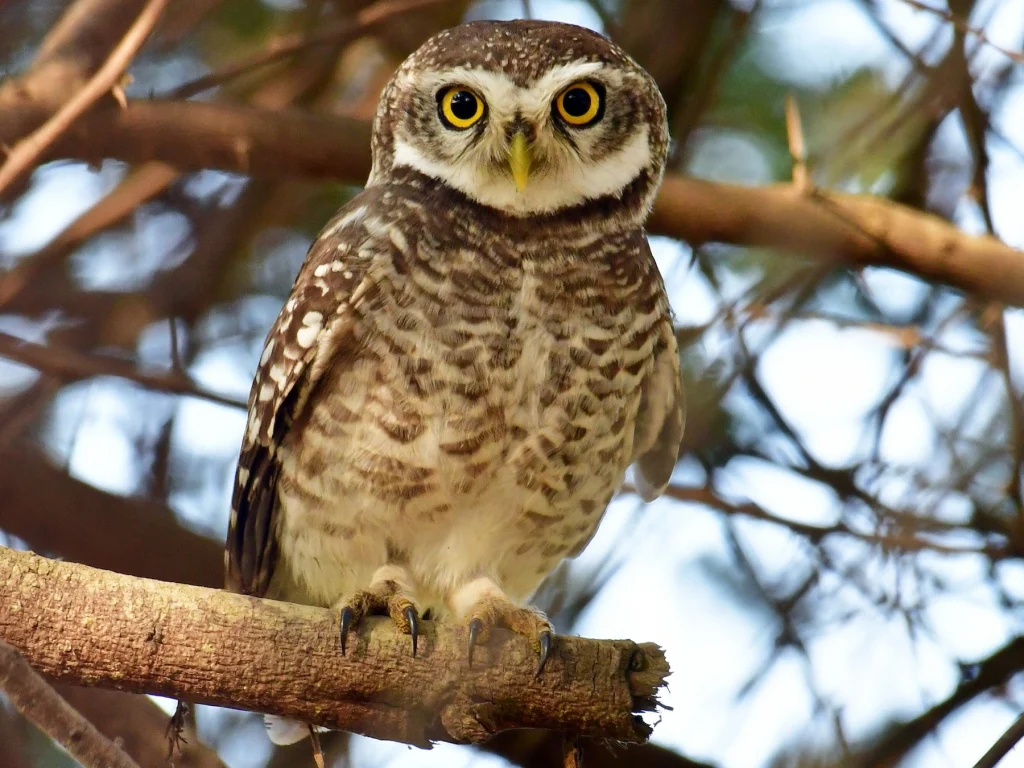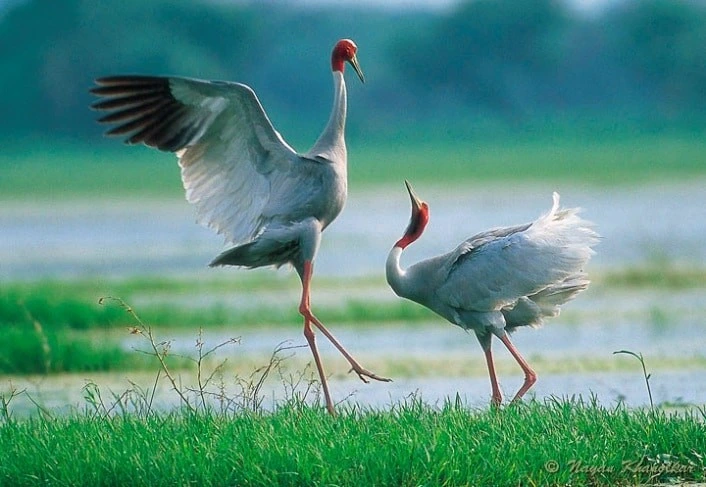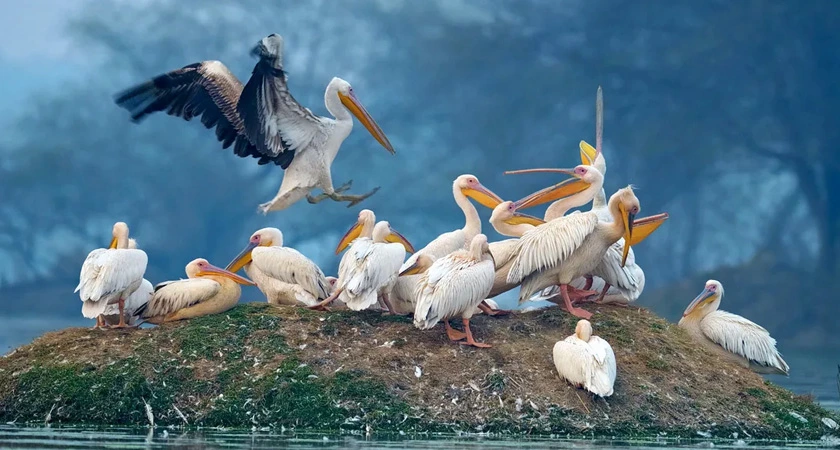Keoladeo National Park, popularly known as Bharatpur Bird Sanctuary, is located in the Bharatpur in Rajasthan, and recognised as one of the world’s most important bird breeding and feeding grounds.
Keoladeo National Park is situated in the Rajasthan state in Bharatpur district.
It is also called haven for birds. it’s home to a wide variety of indigenous & migratory water birds.
About 370 species of birds inhabit the park, besides various mammals like deer & nilgai, and reptiles like the basking python.
Keoladeo National Park formerly served as a hunting and game reserve for both the Maharajas and the British colonial rulers.
In 1985, UNESCO acknowledged and designated Keoladeo ghana National Park as a World Heritage Site.
Wildlife of Keoladeo National Park
UNESCO recognizes Keoladeo National Park as a sanctuary for a diverse array of wildlife, boasting over 375 avian species, including five critically endangered, two endangered, and six vulnerable species.
Additionally, the park’s abundant water sources, particularly during years of ample rainfall, support a rich tapestry of life, with 50 fish species, 13 snake species, 7 turtle species, and close to 400 varieties of flora.
As one delves deeper into the park, encounters with animals like sambar deer, nilgai antelope, chital deer, blackbuck antelope, golden jackals, rhesus macaques, and Indian porcupines become increasingly likely.
Yet, the true highlights of Bharatpur lie in its winter visitors, especially migratory birds, many of which travel from distant lands like Afghanistan, China, and Siberia.
While the park was once renowned for hosting endangered Siberian cranes during winter, sightings of these majestic birds ceased after 2002. Nonetheless, the sight of sarus cranes, adorned with striking red bands around their necks and heads, remains captivating. During winter, the park also plays host to other threatened species such as the greater eagle and imperial eagle.
Also read about Ranthambore National Park, Desert National Park.
Notable winter migrants include bar-headed geese traversing the Himalayas, grey-lag geese from Siberia, as well as pintail geese, Asian pygmy geese, greater white-fronted geese, and lesser white-fronted geese. Among the myriad of avian visitors are red-crested pochards, common pochards, Baer’s pochards, various duck species, pintails, both greater and lesser flamingos, and the elusive Siberian rubythroat.
Also read about Sariska National Park.
Keoladeo national park Name theory
There are many street legends about the park’s name — some believe that Bharatpur gets its name from the Hindu deity Rama’s brother Bharat. The current official name, Keoladeo National Park, comes from the temple to deity Shiva or Keoladeo that sits inside the park. The park is locally also known as “Ghana” referring to its dense canopy.
Keoladeo national park vegetation/Flora
Keoladeo National Park spread across 2,873 hectares of diverse landscapes including woodlands, grasslands, wetlands, and woodland swamps.
The vegetation predominantly consists of dry deciduous varieties, hosting medium-sized trees and shrubs throughout the forested areas. Commonly sighted tree species within the park include kadam, jamun, babul, kandi, ber, kair, and piloo.
Keoladeo national park animals/fauna
Keoladeo National Park is famous for harbors 370 bird species, attracting a significant population of aquatic birds from regions like Afghanistan, Turkmenistan, Siberia, and China. Remarkably, it stands as the sole habitat in India where the critically endangered Siberian Crane can be observed during the winter season. Among the diverse avian fauna present, visitors can anticipate sightings of cranes, pelicans, eagles, wagtails, spotted bill ducks, white-breasted kingfishers, moorhens, painted storks, partridges, magpie robins, honey buzzards, rose-ringed parakeets, and green-footed yellow pigeons.
keoladeo National Park Birds
The Indian cormorant or Indian shag

Painted Stork

The spotted owlet

keoladeo national park siberian crane

keoladeo national park bharatpur bird sanctuary is mainly known for migrated Siberian cranes.
The Siberian crane, also known as Grus leucogeranus or the Siberian white crane, is classified as critically endangered.
They occur in three groups: the eastern group, which migrates from eastern Siberia to China, the central group, which migrates from western Siberia to India, and the western group, which migrate from western Russia to Iran. The height of an Adult Siberian crane is around 5 feet and weighted 6 kgs.
keoladeo National Park Tickets
The ticket is Rs. 75 for Indian tourists and Rs. 500 for foreign visitors.
Frequently Asked Questions
Q. What is the best time to visit Keoladeo National Park?
August to November is the best time to visit it to spot the resident breeding birds, while October to February is when you can spot a variety of migrant birds.
Q. What kind of safaris are available at Keoladeo National Park?
Cycle/rickshaw/horse tongas safaris are conducted inside the Bharatpur National Park. Safaris start from 8 AM and are available till 5 PM.
Q. What are the park timings of Keoladeo National Park?
The park is open from 6:30 AM to 5 PM during winters, and 6 AM to 6 PM throughout the rest of the year.
Q. How to reach Keoladeo National Park?
Air Travel: The closest airport to Bharatpur is Agra Airport, located approximately 56 kilometers away. Taxis can be arranged at the airport for transportation to Bharatpur.
Train Travel: Bharatpur Railway Station is conveniently situated just 5 kilometers from the bird sanctuary.
Road Travel: Bharatpur is easily accessible via NH 11, linking major cities such as Jaipur, Alwar, Agra, and Delhi. Additionally, Bharatpur has its own bus stand offering state-run transport services.
